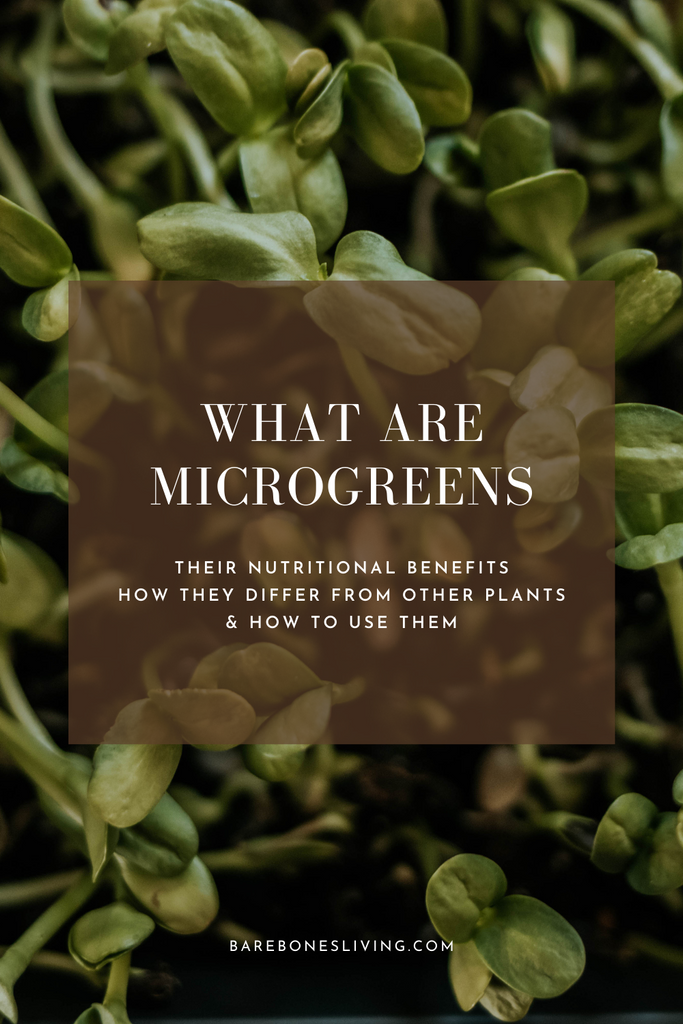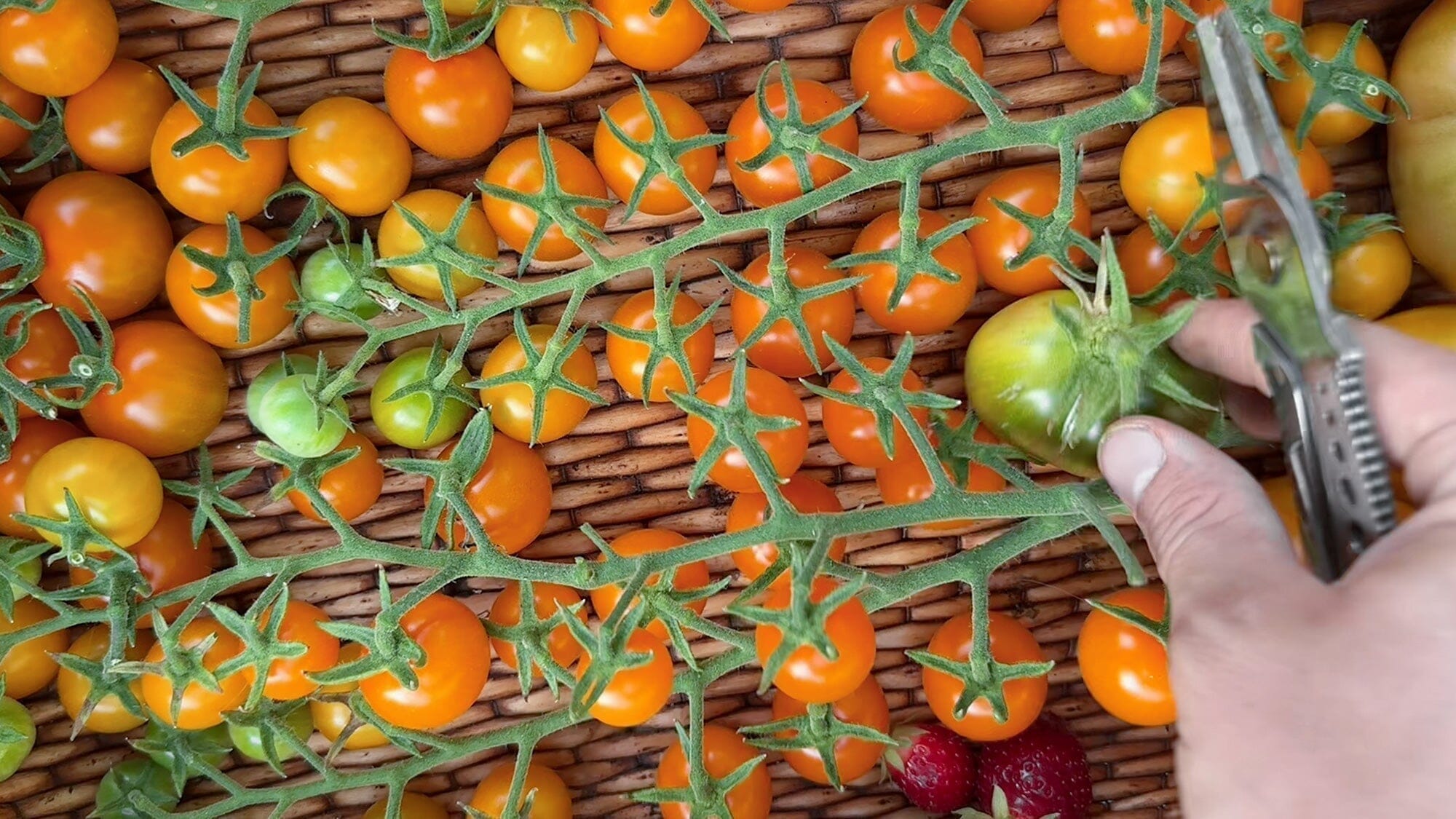By Brianne Dela Cruz; Gather & Grow

What are Microgreens
Their Nutritional Benefits
How They Differ From Other Plants
& How to Use Them
What are microgreens?
Microgreens are vegetables or herbs that are harvested at an early stage when the plant first emerges from the soil. They are small in size but packed with healthy benefits and intense flavor. Microgreens are not a vegetable of their own, rather a seedling or a baby version of vegetables, herbs, and edible flowers. Some of the more common microgreens to grow include anise, basil, borage, chervil, cilantro, cress, dill, fennel, parsley, arugula, broccoli, cabbage, kale, kohlrabi, mustard, pea, radish, amaranth, celosia, marigold, and sunflower.
What's the difference between microgreens and sprouts?
Many people think that microgreens are similar to sprouts, however, they are not the same. Sprouts are germinated seeds: they don’t have leaves, and they are cultivated differently.
What are the nutritional benefits of microgreens?
Many studies reveal that microgreens pack a nutritional punch and some greens are even considered a superfood. The USDA has stated that some microgreens pack more nutrients in their tiny leaves and stems than the full-grown version of themselves. In particular, red cabbage microgreens have garnered attention for their potential to help protect against chronic illnesses like cardiovascular disease. While the exact type of nutrients vary with each type of vegetable, most microgreens have high levels of minerals, antioxidants, and vitamins. Many varieties also have great amounts of calcium, phosphorus, magnesium, iron, and manganese.
Are microgreen seeds different from regular seeds?
Microgreen seeds are essentially just regular seeds, but there are some minor differences. The purpose of microgreens is to quickly grow, harvest, and enjoy the vegetable or herb at the seedling stage. Germination time is relatively short for microgreens. This is where you may notice the difference between regular seeds and seeds that are marketed as microgreen seeds. Many microgreen seeds have been bred to germinate and produce leaves within one week, but it doesn’t mean they won’t grow to be a full size vegetable if you were to grow them in a suitable environment for that purpose. Because the seeds are being sold as microgreens, it indicates the seeds have been tested and formulated to grow in a shorter time frame so that they can be harvested more rapidly.
On that same note, not all regular seeds can produce plants that can be harvested as microgreens because the time for germination is so long for regular seeds. Regular seeds also have precise requirements for growing successfully, such as spacing and depth. Microgreen seeds, on the other hand, can still germinate and grow well in high density environments.
What are the best microgreens to grow?
Truthfully it comes down to personal preference if you're choosing between different plant varieties. Different types of plants offer different flavors and textures. However, I always recommend choosing organic microgreen seeds over non-organic ones. You never want to ingest plants that have been exposed to toxic chemicals anywhere in their breeding lines.
Microgreens Flavors

|
Microgreens have intense amounts of flavor packed into their tiny bodies - sometimes more than a full grown vegetable. Instead of spreading the nutrients throughout an entire mature leaf, the flavors are concentrated in the small stems and leaves. The flavors vary greatly from one plant variety to another just like with any mature vegetable. Radish micros are extra peppery, sunflower shoots are extra sweet and buttery, and basil micros are exceedingly aromatic. Whether the micros are mixed in with the main course or sprinkled on top for added texture, they enliven any dish to the next level. |
How to Use & Cook
with Microgreens
|
Microgreens are more than a garnish, they are delicious mixed into salads or used as a substitute for lettuce. Microgreens elevate sandwiches and pack a nutritional punch in smoothies. They can also be used as a base ingredient for plant-based sauces and dressings like chimichurri, pesto, and spicy green aioli. They add a flavorful complexity to soups, and they’re even delicious when stir fried with whole vegetables. |
 |
Learn How to Grow Your Own Microgreens at Home >>>
ABOUT
Brianne Dela Cruz is a master gardener, wild forager, campfire foodie, and acclaimed writer and photographer. From her home in Salt Lake City, she teaches online gardening and foraging courses for modern folks and budding naturalists as well as hosts seasonal community gatherings. Brianne's blog and online school, Gather & Grow, is a community of folks exploring the intersection between nature and personal growth by discovering ways to slow down and nourish themselves with nature.


